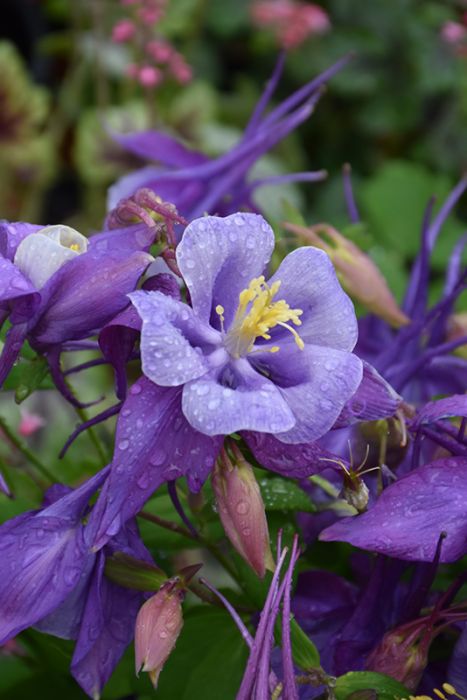Aquilegia, Columbine 'Earlybird™ Purple and Blue'



Out of stock
Coming soon, still growing- Sun Preference
- Full-Sun, Part-Sun, No-Sun
- Bloom Time
- May, June
Description
Short statured plants produce an abundance of showy wine purple flowers with indigo blue centers. Excellent as a cut flower and for naturalizing woodland borders.
Minnesota's Largest Selection of Perennials
Discover an unparalleled selection of perennials at Gertens! With the largest variety in Minnesota, we offer endless options of colorful perennials, natives, and pollinator plants to beautify your garden year after year. From vibrant flowers to lush foliage, our perennials are perfect for adding beauty and charm to your outdoor space. Visit Gertens today and see why we're known as Minnesota's Destination Garden Center!
Details
Earlybird™ Purple and Blue Columbine | Aquilegia 'PAS1258487'
Height: 11 inches
Spacing: 10 inches
Sunlight: full sun to full shade
Hardiness Zone: 2b
Other Names: Wild Columbine, Granny's Bonnet
Group/Class: Earlybird™ Series
Brand: PanAmerican Seed
Description:
Showy, purple nodding flowers with steel blue centers on slender stems with long, graceful spurs; makes for long lasting cut flowers; controlled habit with short stems on well mounded plants; good for naturalizing partially shaded areas
Ornamental Features
Earlybird™ Purple and Blue Columbine features bold nodding purple bell-shaped flowers with steel blue overtones and purple spurs at the ends of the stems from mid spring to early summer. The flowers are excellent for cutting. Its ferny compound leaves remain green in color throughout the season.
Landscape Attributes
Earlybird™ Purple and Blue Columbine is an herbaceous perennial with a mounded form. Its relatively fine texture sets it apart from other garden plants with less refined foliage.
This is a relatively low maintenance plant, and should be cut back in late fall in preparation for winter. Deer don't particularly care for this plant and will usually leave it alone in favor of tastier treats. Gardeners should be aware of the following characteristic(s) that may warrant special consideration;
- Insects
Earlybird™ Purple and Blue Columbine is recommended for the following landscape applications;
- Mass Planting
- Rock/Alpine Gardens
- Border Edging
- General Garden Use
- Groundcover
- Naturalizing And Woodland Gardens
- Container Planting
Planting & Growing
Earlybird™ Purple and Blue Columbine will grow to be about 9 inches tall at maturity, with a spread of 10 inches. When grown in masses or used as a bedding plant, individual plants should be spaced approximately 10 inches apart. Its foliage tends to remain low and dense right to the ground. It grows at a medium rate, and under ideal conditions can be expected to live for approximately 6 years. As an herbaceous perennial, this plant will usually die back to the crown each winter, and will regrow from the base each spring. Be careful not to disturb the crown in late winter when it may not be readily seen!
This plant performs well in both full sun and full shade. It does best in average to evenly moist conditions, but will not tolerate standing water. It is not particular as to soil type or pH. It is somewhat tolerant of urban pollution. This particular variety is an interspecific hybrid.
Earlybird™ Purple and Blue Columbine is a fine choice for the garden, but it is also a good selection for planting in outdoor pots and containers. It is often used as a 'filler' in the 'spiller-thriller-filler' container combination, providing a mass of flowers against which the thriller plants stand out. Note that when growing plants in outdoor containers and baskets, they may require more frequent waterings than they would in the yard or garden. Be aware that in our climate, most plants cannot be expected to survive the winter if left in containers outdoors, and this plant is no exception. Contact our experts for more information on how to protect it over the winter months.
More Information
| Common Family Name | Columbine |
|---|---|
| Gerten Grown Plants | Gerten Grown Plants |
| Available for Pre-Order | No |
| Sun Preference | Full-Sun, Part-Sun, No-Sun |
| Bloom Time | May, June |
| Mature Spread (Range) | Under 12" |
| Mature Height (Range) | 7-12" |
| USDA Hardiness Zone | 2, 3, 4, 5, 6, 7, 8, 9 |


